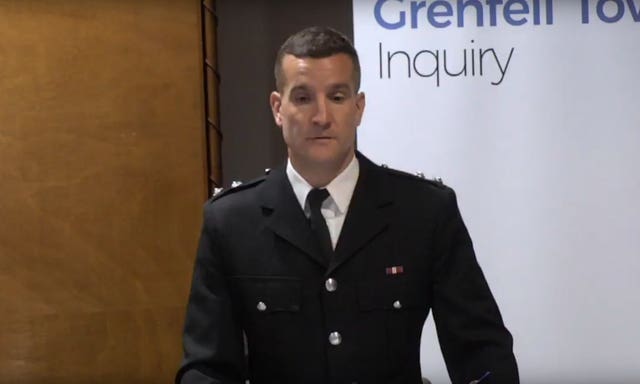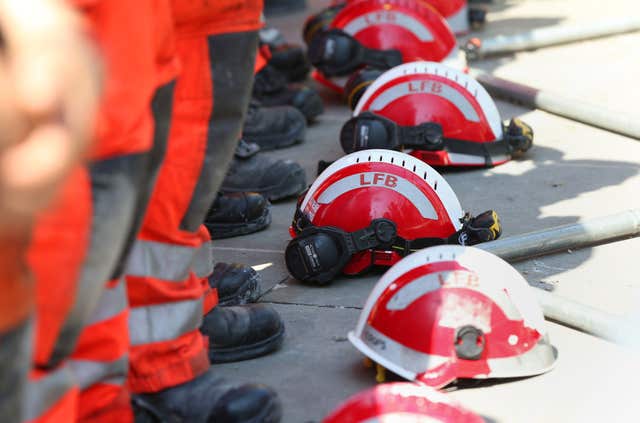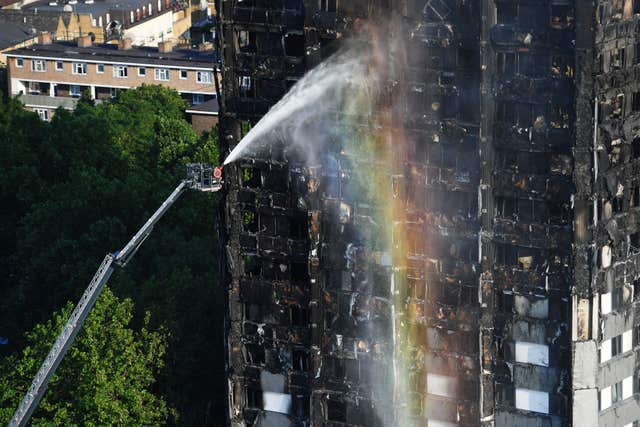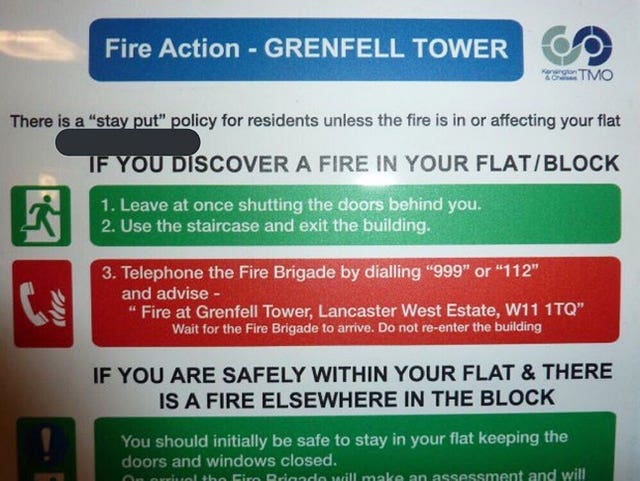
The firefighter in charge of the initial Grenfell Tower response has told an inquiry he would have been unable to spot a cladding fire at the time of the disaster.
Michael Dowden, the watch manager with North Kensington red watch, was the first incident commander on the scene when the inferno began on June 14 2017.
He revealed on Monday that he received no training on evacuating tall buildings with a stay-put policy, such as Grenfell Tower, nor had he learnt the lessons of previous cladding fires.
This included guidance from the London Fire Brigade in July 2016 stressing the “need to understand what products are being used in the facade system and their fire behaviour”.

Richard Millett QC, lead counsel to the inquiry, asked the 14-year veteran of the brigade, who had inspected Grenfell Tower during its final refurbishment: “As of June 2017, were you aware of that?”
“No, no I wasn’t,” he replied.
His position as watch commander meant he would usually only be incident commander for fires requiring four pumps, meaning four fire engines.
A fire at a high-rise block in Shepherd’s Bush in 2016, attended by Mr Dowden, had seen flames climb from the flat of origin up a cladding system, prompting the LFB to warn all councils about flammable facade materials.
That same year, Grenfell Tower was reclad with panels that experts found to be highly combustible, a feature Mr Dowden admitted he “cannot recall” investigating during a visit in February.
He said in a written statement to the inquiry that he saw the fire “sparking and spitting in a similar way to when magnesium burns and it was making me feel uncomfortable”.

Mr Millett asked him during a hearing at Holborn Bars on Monday: “As of June 2017, do you think you would be able to identify a cladding fire if you saw one?”
He replied: “No, I wouldn’t be able to identify a cladding fire because I didn’t know at that point that (combustible materials) was being used as a cladding material.”
During a long morning of questioning, the fire officer conceded that he was unfamiliar with key training requirements expected of an incident commander.
It is feared that the LFB’s failure to abandon stay-put advice to residents for nearly two hours could have contributed to the death toll.
Mr Millett took Mr Dowden through national policy guidance covering the subject from February 2014, called “Generic risk assessment 3.2: fighting fires in high rise buildings”.
Mr Dowden said he was not aware of the document’s existence.
One point said: “Incident commanders should understand when a partial or full evacuation strategy might become necessary in a residential building where a stay-put policy is normally in place.”
Asked if, as an incident commander, he had received such training, Mr Dowden replied after a long pause: “As an incident commander I cannot remember any time I have actually been on a training course that would facilitate that.”
Chairman Sir Martin Moore-Bick asked: “Did anyone give you any help or advice in understanding when it might be necessary to have a full evacuation, things to look out for, or was it just down to your personal experience?”

He replied: “I don’t think I’ve had any input from any individual, the only way I could relate to that is reference back to our internal high-rise policy, particularly around when compartmentation fails etc, but I don’t think I’ve been in a training environment when that’s been referenced.”
Mr Millett asked if it would be fair to say that training was “a lot about what the policy contained but you weren’t trained in how to implement it”, Mr Dowden replied: “I would say that is a fair comment.”
It emerged that Mr Dowden had not been trained on the evacuation of residents with mobility difficulties from high-rise buildings, nor how to change the survival advice given by call operators.

Neither had he been trained to spot the early warning signs that a fire was not staying within its flat of origin, as it is designed to, or the risk certain materials could pose.
The fire officer said in his written statement that the Grenfell Tower inferno quickly moved outside of his “comfort zone” as an incident commander.
The inquiry was also told about his training record.
Mr Dowden was listed as a “lecturer”, but said the contents of his lessons were never checked by supervisors or superiors, only auditors who visited occasionally.
Mr Millett asked him: “How could you know that the lectures that you were giving to your firefighters about high-rise firefighting were effective?”

He replied: “I suppose the only way that I could ever really do that is to see how they apply themselves on the fireground.”
The inquiry lawyer said: “Leaving it to the fireground of an actual incident? Might that not be a bit late?”
“I suppose, yes,” replied the fire officer.
The officer is one of seven members of the LFB due to give evidence before the inquiry this week.


Comments: Our rules
We want our comments to be a lively and valuable part of our community - a place where readers can debate and engage with the most important local issues. The ability to comment on our stories is a privilege, not a right, however, and that privilege may be withdrawn if it is abused or misused.
Please report any comments that break our rules.
Read the rules here